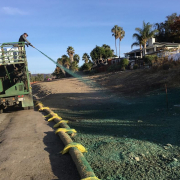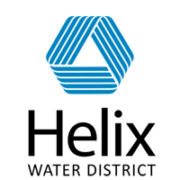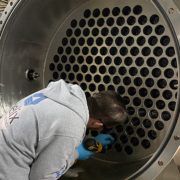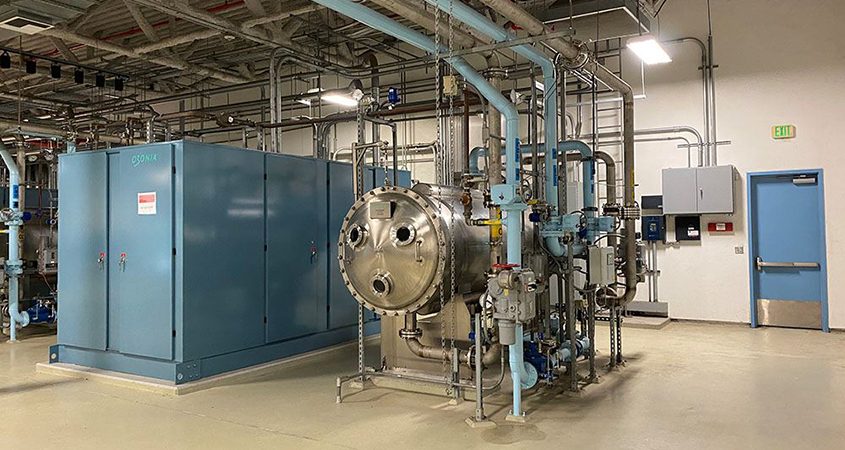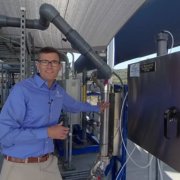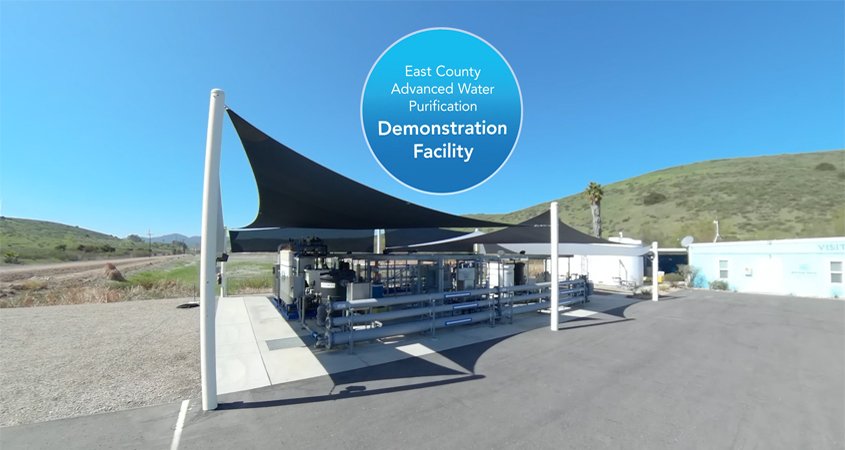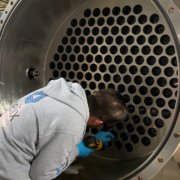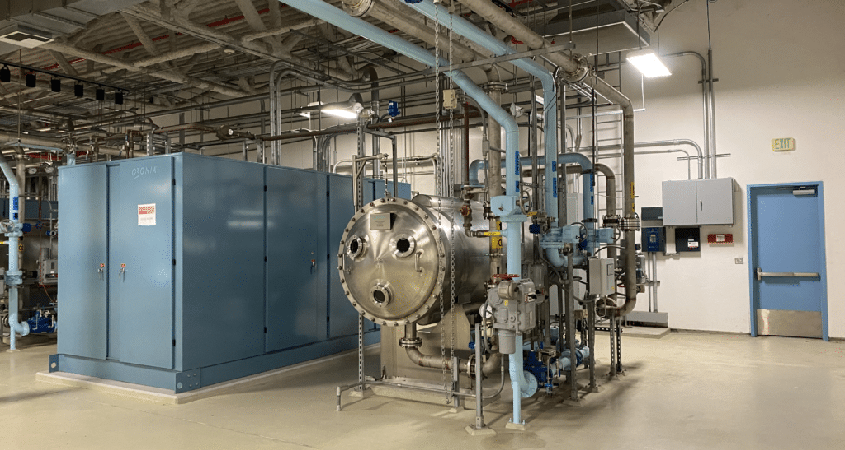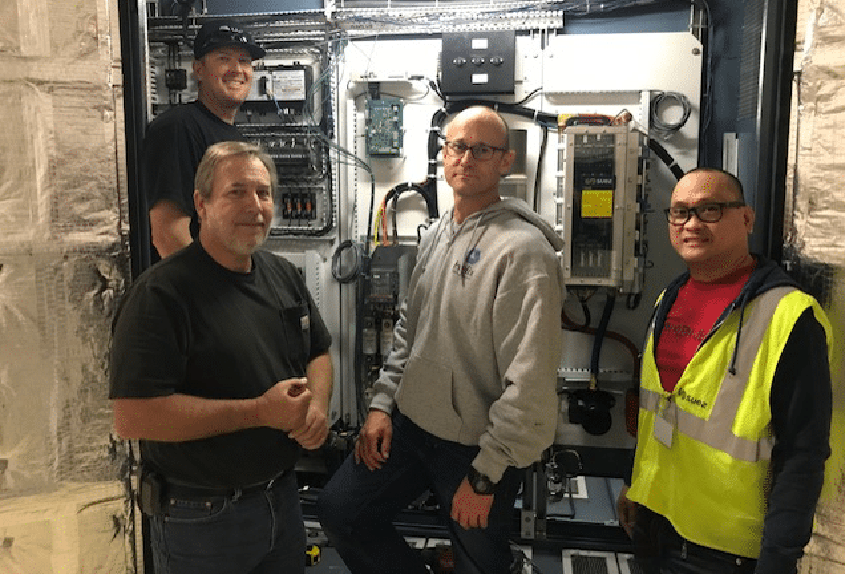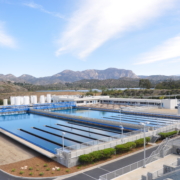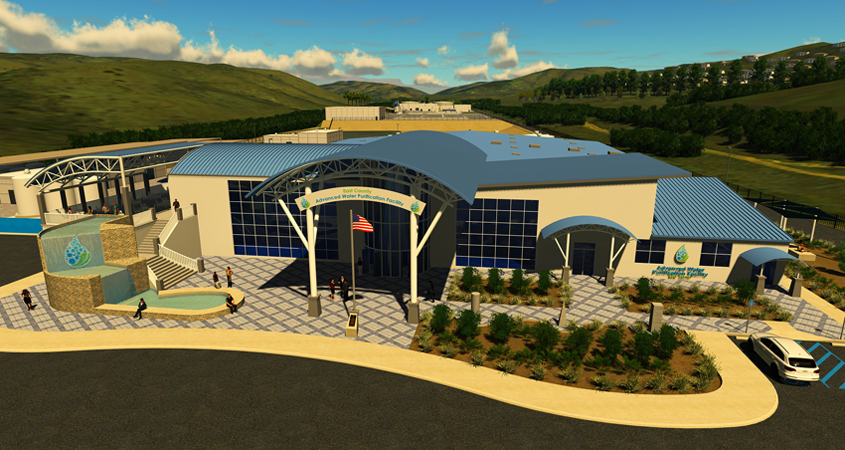East County AWP Updates Construction Progress for 2025
Progress on the East County Advanced Water Purification Program (East County AWP) continues on schedule at multiple East County locations, with an increasing number of milestones being reached as the project nears completion in 2025.
The East County Advanced Water Purification Program is an important water project for East San Diego County. When complete, it will deliver a clean, reliable, and local water source.
See a time-lapse video of 12 months of construction from January through December 2024.
Over the last 12 months, many milestones have been accomplished, including:
- Completion of the purified water pipelines in Santee
- Fanita Parkway has been repaved, curbs and sidewalks restored, and construction equipment removed
- Completed 95% of concrete pouring required for the site
- Completed 78% of all water pipeline construction
- Installed the Lake Jennings inlet to allow purified water to flow into the lake before it is treated at the R.M. Levy Water Treatment Plant
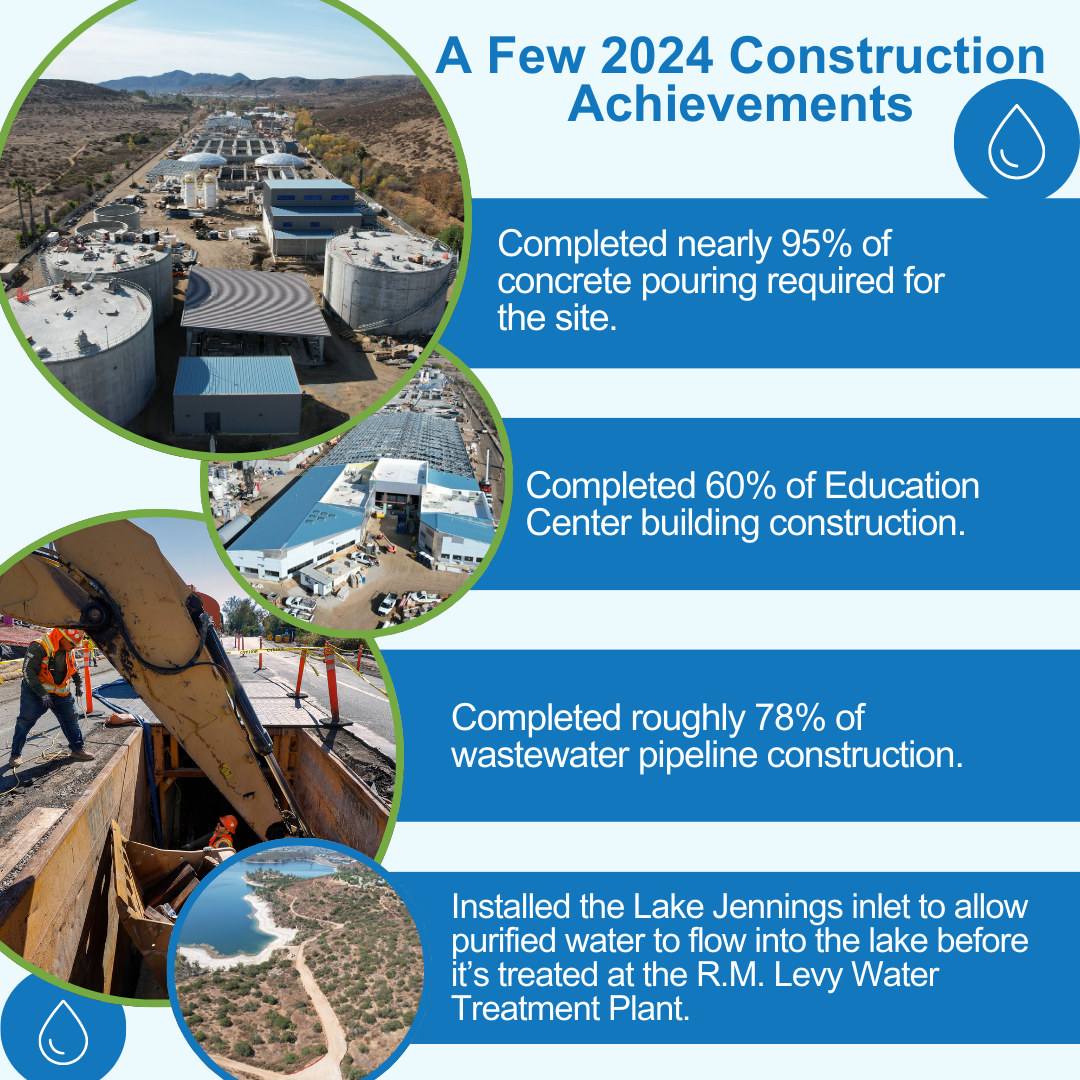
The East County AWP achieved significant milestones in 2024, with more ahead in 2025.
Construction is set to begin in spring 2025 on a newly approved phase of the project that will include work within Mission Trails Regional Park. This phase includes the rehabilitation of the existing East Mission Gorge Force Main, which will help add capacity for increased sewer flows during rainy weather to the City of San Diego for treatment.
It also includes the construction of new pipelines in the East County to manage residuals, which are the organic residues removed from wastewater during the treatment process, sending them from the East County AWP Project around the City of San Diego’s Pure Water Program facilities as a regional solution to residuals management.
Tour the latest East County AWP construction progress in this video update.
Purified Water Pipeline Construction and Road Closures
Work on pipelines is ongoing in Lakeside at the following areas:
- Riverside Drive from Riverford Road to Rio Camino
- Channel Road from the bridge to Rio Camino
- Channel Road from the bridge to Mapleview Street
Expect reduced travel lanes at these locations. Crews have completed purified water pipeline installation along Mast Boulevard, which is being followed by final roadway paving.
Final paving entails grinding and overlaying the existing roadway to be replaced with new asphalt. Crews use a remote-controlled trench roller to compact the top layer of material when paving the roadway.
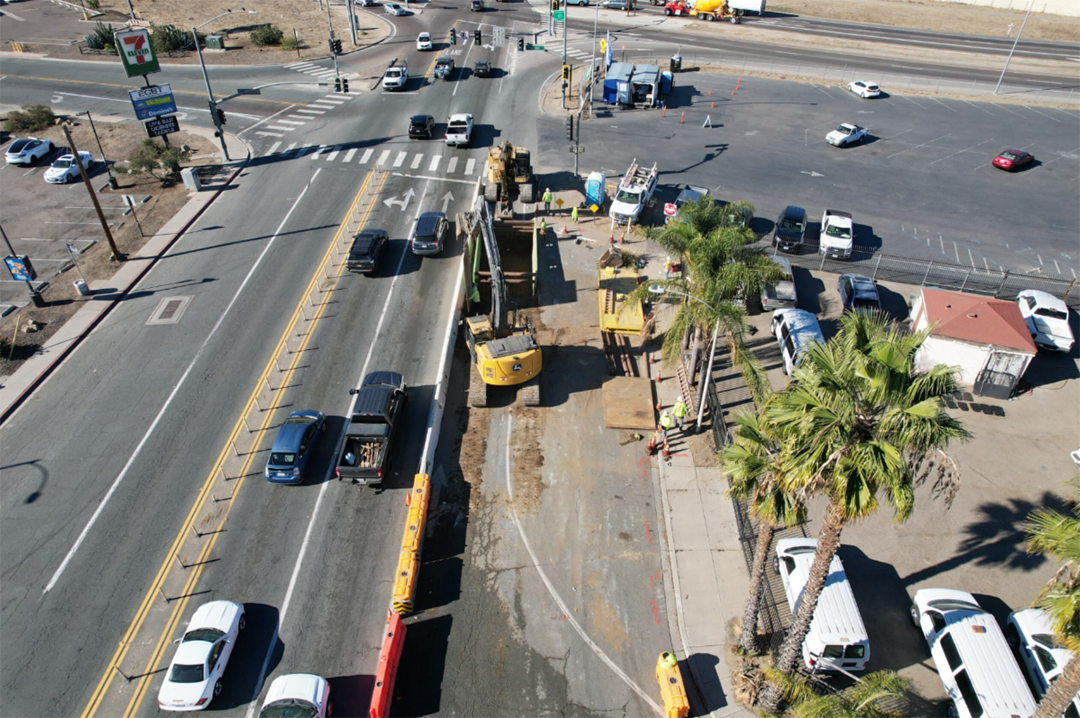
Jack and bore excavation work is underway near State Route 67 and Mapleview Street in Lakeside ahead of purified water pipeline installation. Photo: East County AWP
Restoration Efforts Underway in Santee and Lakeside
As part of restoration efforts, residents may see hydroseeding, the spraying of a mulch-type mixture with seeds, and a binding agent to prevent erosion and protect the seeds.
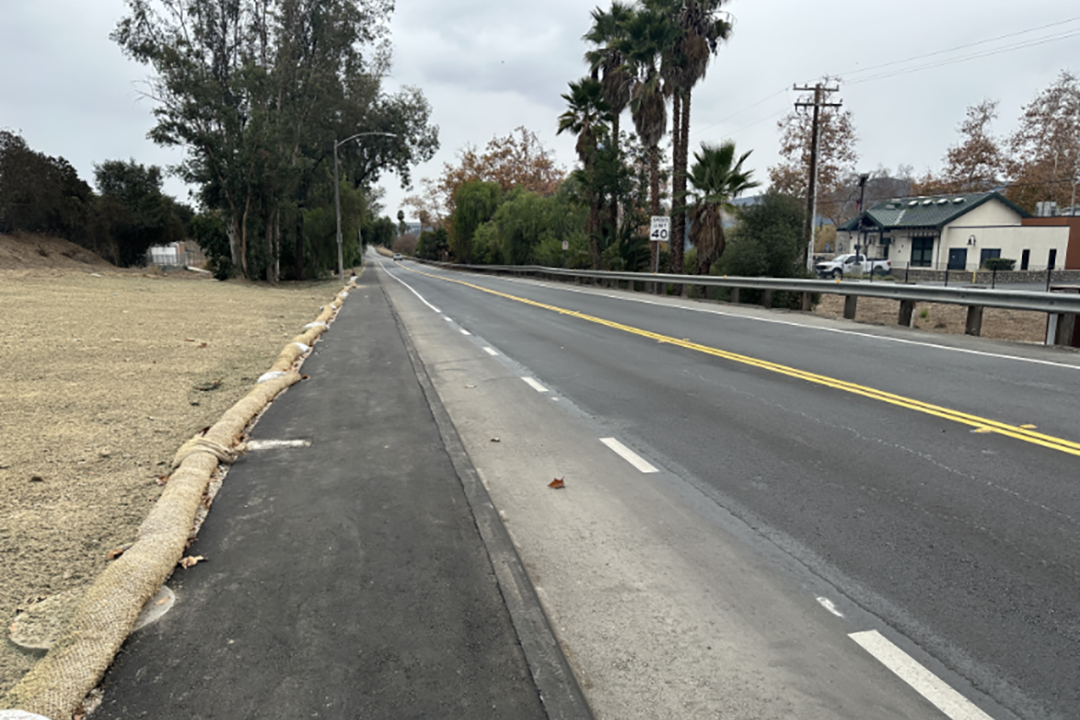
Newly hydro-seeded areas along Fanita Parkway in Santee, where pipeline construction is complete. Photo: East County AWP
Hydroseeding work is nearly complete along Fanita Parkway in Santee, with final work to be completed this spring. In addition to newly installed plants, El Monte Road in Lakeside was also recently hydro-seeded.
Avoid walking, dog walking, biking, jogging, and driving in hydro-seeded areas. These activities prolong the revegetation efforts and the length of time these areas are closed to the public.
Protecting Bird Species During Construction

Compliance with the Migratory Bird Treaty Act and general wildlife protection within the project vicinity allows birds like this Bald Eagle to safely nest in the construction area during breeding season. Photo: East County AWP
The East County AWP project is committed to complying with the Migratory Bird Treaty Act and protecting wildlife within the project areas.
The Migratory Bird Treaty Act protects common, game, and special-status bird species across the United States. This protection includes nests, eggs, and young. With the spring bird breeding season now underway, larger birds such as hawks, owls, and crows build their nests early in the season. Smaller songbirds start nesting in early spring.
If additional vegetation clearing is required, biologists supervise clearance once the absence of nesting is confirmed.
Stay Updated On Program Progress With Interactive Map
When completed, water from this project will be provided to customers in Padre Dam Municipal Water District, Helix Water District, and Lakeside Water District service areas, and the northern portion of the Otay Water District.
With construction in multiple locations throughout East County, the Program’s interactive map continues to be a valuable tool for residents and businesses to track where work is happening. The map is updated regularly and accessible 24/7 through the EastCountyAWP.com website. Information is also available via social media at @eastcountyawp

